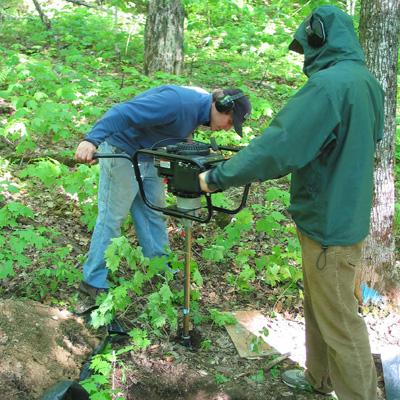Soil Carbon and Other Quality Indicators in Managed Northern Forests

Change is occurring in the Northern Forest from human activities that regionally and globally influence acidic deposition, mercury deposition, and climate change. Local forest management practices also create an impact, which may accelerate as communities seek alternative energy sources from forests. Forest ecosystems remove and store excess carbon from the air, and soils are a major carbon reservoir. Much is unknown about how soil carbon varies with different soil and forest types and how managing forests influences soil carbon.
Eighteen pre-harvest reference plots were established on sites in Vermont with sustainable harvesting plans. NSRC researchers analyzed soils for carbon, nitrogen, and mercury and measured vegetation and physical site characteristics. After harvest, researchers can monitor impacts of harvesting on soil carbon and examine links between atmospherically derived forest changes and those created through forest management.
Results from pre-harvest sampling showed more carbon stored in soil than in live trees. Carbon storage in soil depended on soil depth, elevation, and wetness and on time since disturbance and land-use change. Sites where bedrock was close to the surface stored much less carbon than did deeper soils. Forest floor carbon had a wider relative range than mineral soil carbon. The highest mercury concentration was found in the Oe horizons (forest floor fermentation layer); the highest mercury pools (mass per area) were found in the mineral soil A horizon because of its greater density. Disturbance and increased light penetration from harvesting will most strongly affect near-surface soil horizons. Researchers can use these baseline results to detect relatively small changes in forest floor carbon and mercury.
Download printable version [PDF]
Download full final report [PDF]
